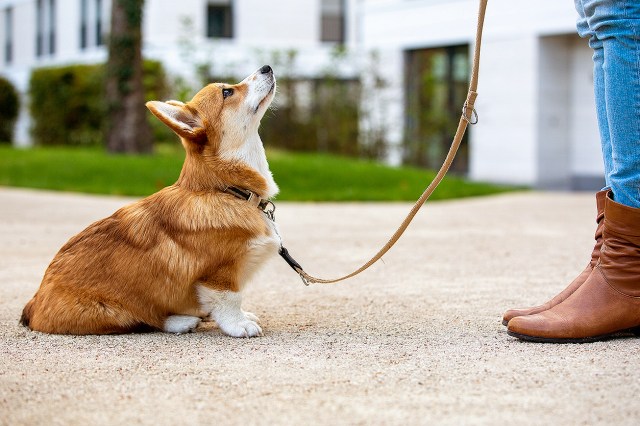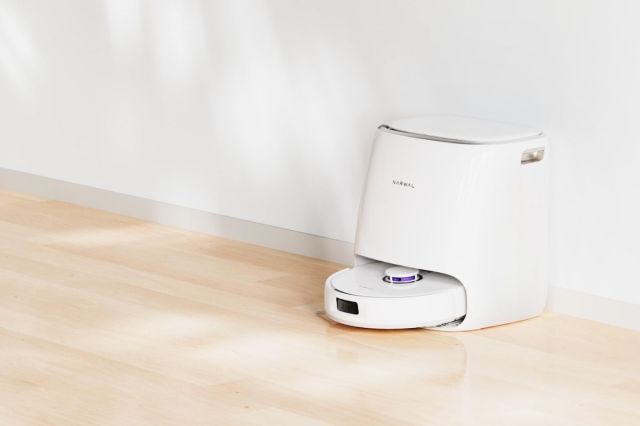Many dog owners would pay a fortune for the ability to speak to their dogs, but until that device is invented, it’s up to us to decode what our four-legged friends might be thinking or feeling. Some canine behaviors are obvious — a tail wag after a treat indicates happiness, while a bark after a knock on the door might indicate anything from alarm to curiosity — but others can be downright puzzling. Fortunately, experts have cracked the code on these behaviors, helping you better communicate with your pup.
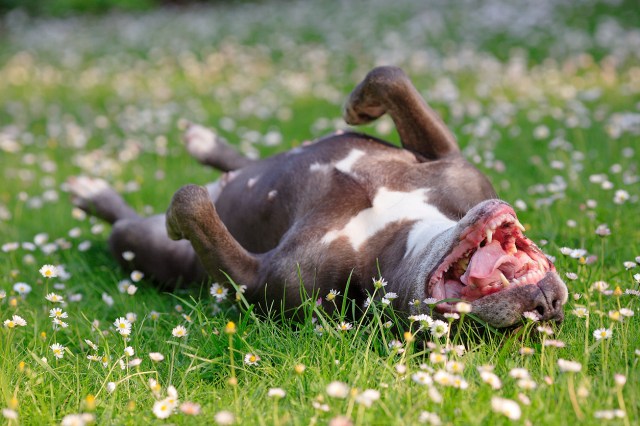
Rolling in Smelly Things
Pet dogs may lead very different lives than their wild ancestors did, but some of their habits have stuck around. One of these instincts is scent-masking. Wolves and other wild dogs often hide their odor by rolling in smelly or dead things before hunting. In domestic dogs, this behavior manifests as rolling on anything from dead worms, bugs, and mice to roadkill. Another theory about this behavior points to dogs “bragging” about what they found — they want to roll in it and absorb its scent so that everyone knows about their discovery.

Head Tilting
As we nod to show someone we’re listening, a dog tilts its head when fully engaged. Dogs have limited directional hearing, which means this adorable, picture-worthy pose might be an attempt to hear better. Excessive tilting may indicate a medical problem, such as an ear infection. Most of the time, however, if your dog tilts its head as it sits right in front of you, it means they are soaking up every word.

Eating Grass
Contrary to popular belief, your dog probably isn’t eating grass to soothe an upset stomach, though the fiber may help constipation. Grass-eating is mainly psychological — dogs might do this to burn off anxious energy, like humans chewing their fingernails, or to receive attention from their owner by doing a “bad” action. While this behavior is very normal, it’s not always safe for dogs to eat grass, especially grass treated with pesticides. Try to train your dog out of this habit for their well-being.
Reader Favorites
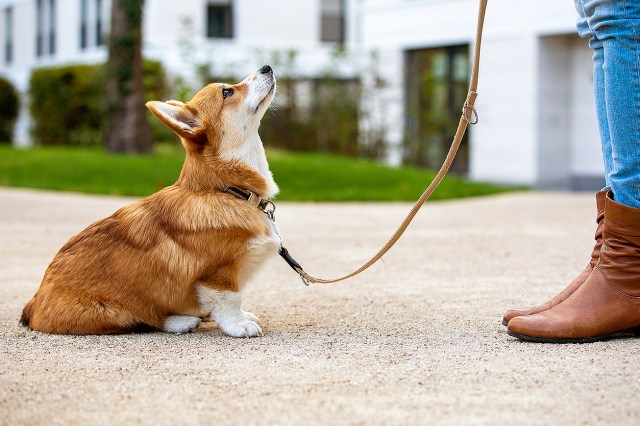
Scooting
Dogs occasionally scoot around on their behinds. This is usually harmless, but if the behavior continues beyond once or twice, it might be time to take them to the vet to get their anal glands expressed. These fluid-filled sacs usually empty naturally during bowel movements, but sometimes they don’t, which requires professional intervention. Scooting can also indicate other medical issues, such as allergies.
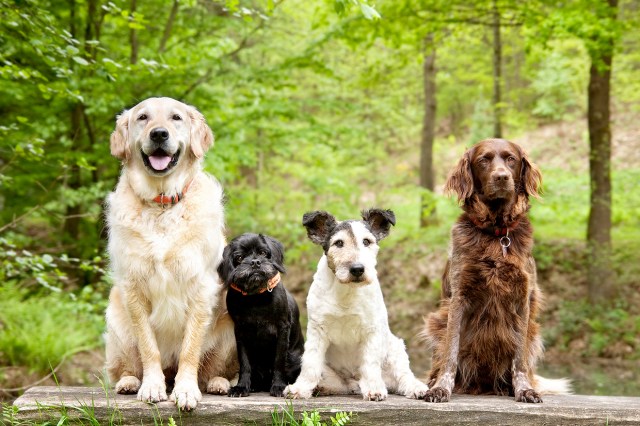
Sniffing Rear Ends
A dog’s sense of smell is about 100,000 times more sensitive than a human’s, which means they predominantly learn about the world through their noses. Dogs can gather all the information they need about another dog by sniffing their rear end, where scents are most concentrated. Every dog’s odor is unique. A quick sniff helps them determine whether they’ve met before, along with the other dog’s gender, reproductive status, temperament, health status, and diet.

Yawning
Sometimes, dogs yawn for the same reasons humans do: they’re tired. However, when meeting a new dog, yawning is a “calming signal” or a peaceful greeting, similar to a human handshake. Yawning can also indicate anxiety, excitement, or insecurity but is usually not an issue unless accompanied by other signs that a dog is in medical distress.

Accidents in the House
For puppies, bathroom accidents are a given, but if your adult, potty-trained dog starts relieving itself in the house, it’s time to talk to a veterinarian. There might be an underlying medical cause, ranging from urinary tract infection to inflammatory bowel disease or kidney problems. After ruling out medical issues, other reasons for this behavior may be less dangerous, such as separation anxiety, marking territory (especially in unneutered and unspayed dogs), excitement, or distress.

Panting
If a dog is panting, they’re probably overheated. Dogs can’t sweat like humans can, so panting helps cool a dog’s body from the inside out. Panting can also result from overexertion during playtime, similar to humans becoming short of breath during strenuous exercise. Occasionally, panting can be a sign of anxiety, fear, or pain, but these typically come with other warning signs, such as trembling, whining, limping, licking, or wincing. Regardless of the cause, if you notice your dog panting, quickly ensure extra water is available to avoid dehydration.
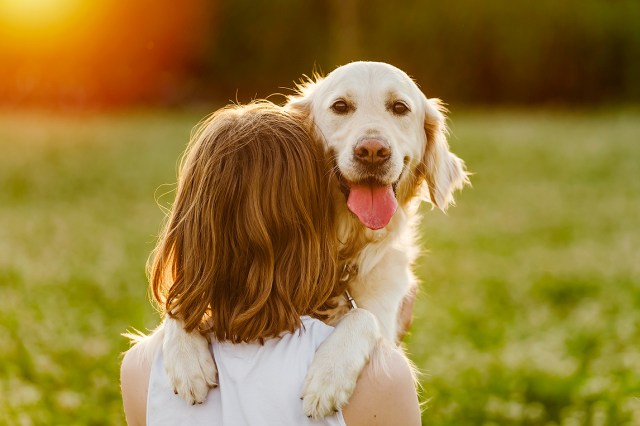
Leaning on People
If a dog leans on you while sitting or lying next to you, it’s a sign of affection. Dogs can’t express emotions as easily as humans, but physical closeness is one way to portray their fondness for you. Leaning against you may also be a sign of fear or anxiety during high-stress situations, such as during a medical check-up or a first-time visit to the dog park.
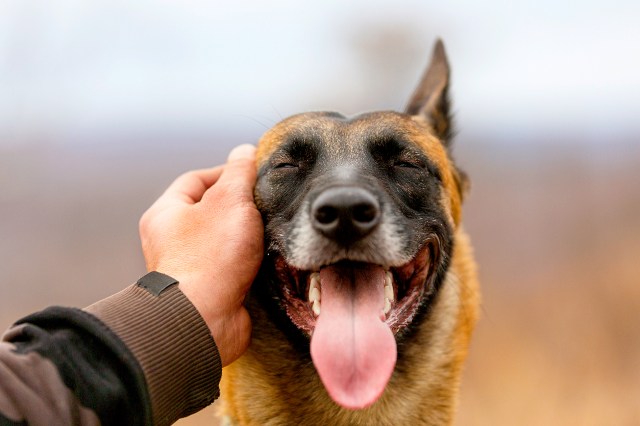
Eating Gross Things
Though we dress them in pajamas and let them sleep in our beds, dogs are still animals. Dogs evolved as scavengers, and occasionally, they revert to their old ways, which means eating a mouse, rotten food from the trash, vomit, and other unpalatable things are simply unfortunate byproducts of evolution. This is usually normal behavior, especially for puppies. However, if an adult dog begins to eat these things regularly, they should be checked by a veterinarian to rule out underlying health issues, such as anxiety and stress.
Featured Image Credit: fotografixx/ iStock22
More From Our Network
Better Report is part of Inbox Studio, which publishes content that uplifts, informs, and inspires.
